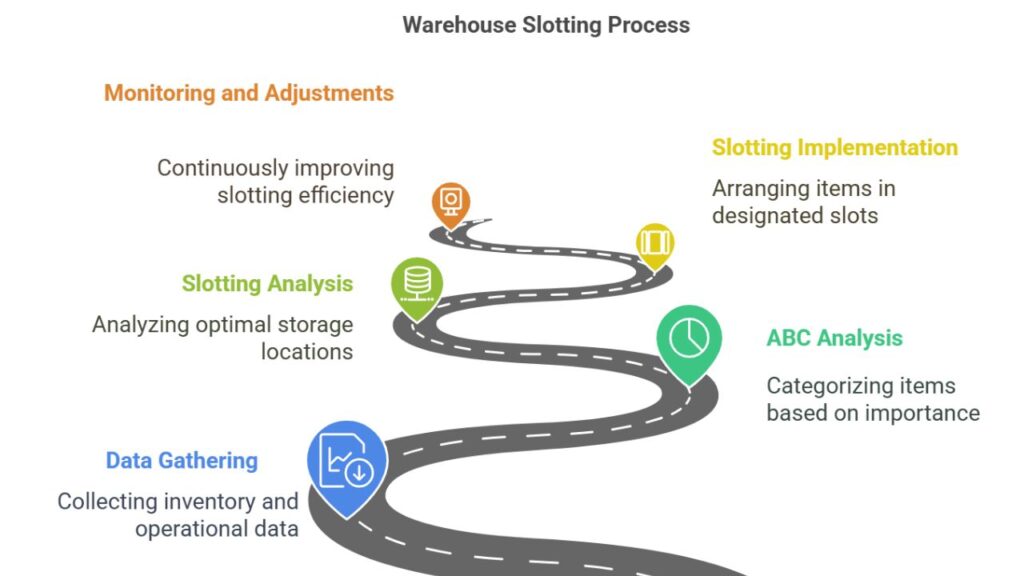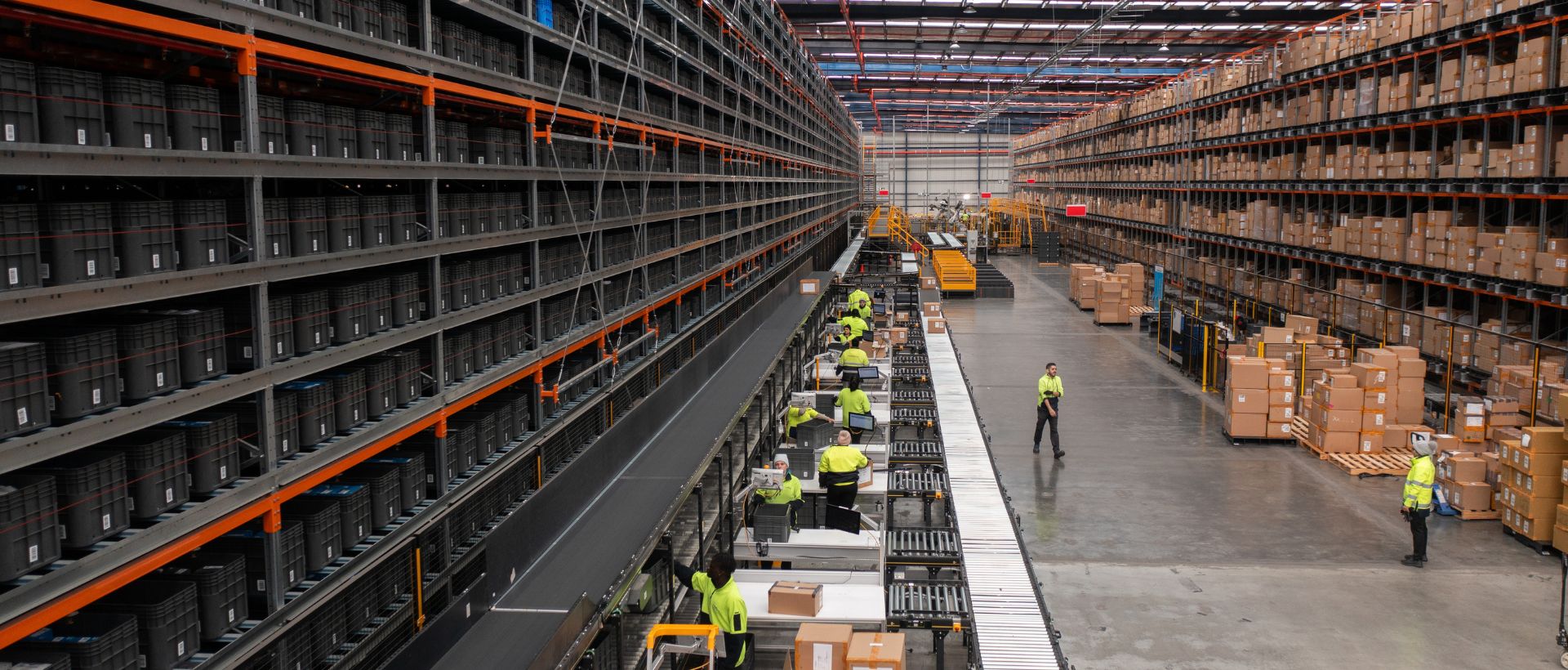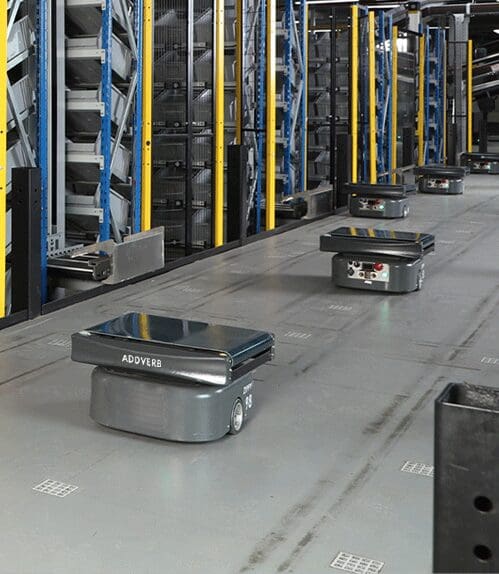Table of Contents
Warehouse slotting strategically organises products within a warehouse to promote space utilisation, order fulfilment, and operational efficiency. By carefully examining product placement, warehouse managers can substantially reduce picking times, reduce worker travel distances, and optimise overall warehouse procedures. Let’s understand it in detail through its approaches, critical considerations, benefits, best practices, challenges, and the importance of using slotting to improve operational efficiency.
Warehouse slotting is giving storage places to products within a warehouse. It aims to keep the most often used items in conveniently accessible locations, while less frequently used items are kept in areas that require less frequent retrieval. The goal is to improve the picking process, decrease worker travel time, and ultimately increase warehouse efficiency. It includes examining product data, purchasing history, and sales trends to decide where each item should be kept. Warehouses can utilise this data-driven strategy to reduce labour costs, enhance productivity, and minimise errors.
What is Macro and Micro Slotting?
The warehouse slotting can be divided into two types: Macro-Slotting and Micro-Slotting.
Macro-slotting entails making high-level decisions concerning the warehouse’s general arrangement. It is concerned with establishing the optimal placements for various product categories, taking into account aspects such as product dimensions, demand, and storage requirements. Macro slotting’s major purpose is to optimise the overall flow of goods inside the warehouse, ensuring that products are kept most efficiently and logically possible.
Micro-slotting, on the other hand, is concerned with the positioning of individual SKUs within their respective product categories. It considers specific parameters such as product popularity, order frequency, and item dimensions. By deliberately arranging high-demand products in easily accessible locations, micro-slotting aims to maximise the efficiency of picking processes. Micro-slotting decreases the time and effort necessary for workers to pick things by optimising the arrangement of individual products, resulting in speedier order fulfilment and greater operational efficiency.
The Advantages of Efficient Warehouse Slotting

Implementing an effective warehouse slotting optimisation plan can provide various advantages:
Increased Picking Efficiency
By placing high-demand items in easily accessible locations, employees may complete orders faster and with fewer errors.
Reduced Labour Costs
Optimal slotting decreases worker travel time, resulting in lower labour costs and higher output.
Improved Order Fulfilment
Picking methods that are faster and more accurate, results in higher order fulfilment rates and customer satisfaction.
Better Use of Space
Efficient warehouse slotting provides for more efficient use of space, eliminating the demand for extra storage facilities.
Inventory Control
Well-organised slotting allows for improved inventory management and lowers the likelihood of stockouts.
Reduced Shrinkage and Damage
Proper slotting can help reduce product damage and losses caused by mistreatment.
Why is Warehouse Slotting Necessary?

Putting warehouse slotting into practice is essential for several reasons:
Time Saving
Efficiency in slotting has the important benefit of saving a lot of time. When items are organised and stored appropriately, they may be promptly discovered, saving workers from having to undertake time-consuming searches. As a result, order fulfilment is expedited and simplified, enhancing overall effectiveness. More orders may be processed in the same amount of time with shorter processing times, boosting throughput and productivity.
Cost Saving
Optimised slotting reduces costs significantly while also saving a significant amount of time. As employees can spend more time on productive tasks than travelling to the warehouse, labour costs are reduced as a result of the decreased travel time for workers. Additionally, by making the most of their current storage capacity, firms might avoid having to make additional storage facility investments. This economical strategy boosts the warehouse’s bottom line performance and generates considerable financial savings.
Customer Satisfaction
Customer satisfaction is a crucial factor that is positively improved by efficient slotting. With quicker and more precise order fulfilment, companies can consistently meet delivery dates and minimise order difficulties. Customers consequently have wonderful experiences, which boosts their satisfaction and loyalty. Customers who are pleased with their purchases are more likely to make more purchases and recommend the brand to others, which benefits the company’s standing in the market and reputation.
Competitive Edge
A well-slotted warehouse also gives a company a distinct competitive advantage. Businesses can set themselves apart from the competition in a cutthroat industry by offering dependable and quick order processing. Effective customer service and reliable delivery entice clients, increasing the business’s appeal and allure to new ones. This competitive edge could lead to a rise in market share, improved customer growth, and ultimately higher earnings.
How is Slotting Done in a Warehouse?

Warehouse slotting optimisation is a methodical and data-driven strategy to improve product placement that leads to improved operational efficiency. The slotting procedure typically includes the following steps:
Data Gathering
The first step is to collect useful data about the products in the warehouse. This comprises product features like size, weight, and dimensions, as well as order history, demand patterns, and any other information that may influence item storage and selection. Making educated slotting decisions requires accurate and up-to-date data.
ABC Analysis
After gathering the data, the following step is to perform an ABC analysis. This classifies products according to their importance and demand. Typically, classification is done into three categories: A, B, and C. Category A contains high-demand and high-value commodities; Category B contains moderate-demand items; and Category C contains low-demand and low-value things. This analysis aids in the prioritisation of item placement based on their importance in warehouse operations.
Slotting Implementation
Once the ideal slotting configurations have been determined, the proposed alterations must be implemented in the warehouse. High-velocity items discovered after the investigation are placed in easily accessible and frequently visited areas. The warehouse layout is changed to match the new slotting technique, ensuring that products are properly positioned for picking and storage.
Monitoring and Adjustments
The slotting procedure does not finish after the slots are assigned. The performance of the slotting strategy must be continuously monitored. Picking times, order fulfilment rates, and other relevant metrics are tracked by warehouse managers to assess the success of the new slotting arrangements. If demand patterns or other factors change, the slotting strategy is adjusted accordingly. This adaptive strategy ensures that the warehouse is always optimised for efficient operations.
Considerations for Warehouse Slotting
When adopting an effective warehouse slotting software/solutions, several main factors must be considered:
- Product Speed: Investigate historical data to identify high-velocity objects that should be placed in high-traffic regions.
- Storage: Consider the physical properties of the products while deciding permissible storage strategies and locations.
- Profile of Order: Understand the various types of orders that are typically processed (for example, individual vs. bulk orders) and adjust the slotting strategy accordingly.
- Seasonal Demand: Take into account seasonal variations in demand and adjust your slotting strategies accordingly.
- Selection Methodology: Choose the optimal picking method (such as zone picking or batch picking) and build slots accordingly.
- Legal Compliance: Ensure that dangerous or fragile items are stored securely and in compliance with applicable laws.
- Worker Travel: Consider the overall warehouse structure and operations while optimising worker travel patterns.
Overcoming Challenges in Warehouse Slotting
Warehouse slotting confronts several issues that must be solved for operations to run well.
- One of the most common challenges is a lack of data. Access to correct and up-to-date data is critical for effective slotting, but it is not always readily available, which can hinder decision-making.
- Another issue is product diversity in terms of shape and size. Managing diverse sorts of products might make slotting more difficult, as each item may necessitate unique storage solutions.
- Then comes dynamic demand. Fluctuations in product demand might make it difficult to construct a consistent slotting strategy, as item storage priority may need to be altered regularly.
- A key difficulty is also the scarcity of resources. Limited warehouse space and resources can make it difficult to adopt ideal slotting practices, necessitating the development of imaginative solutions to maximise productivity within the limits.
Conclusion
Warehouse slotting is a vital component in enhancing supply chain operational efficiency. Warehouses may minimise labour costs, enhance order fulfilment rates, and maximise space utilisation by strategically positioning products based on data-driven insights. Using software for slotting and analysing data regularly ensures that slotting decisions stay adaptable to changing demand trends.

FAQ
What is slotting in a warehouse?
The technique of arranging merchandise in strategic areas to increase order-picking efficiency and save operating costs is known as warehouse slotting.
In what ways does slotting increase productivity?
Slotting speeds up order fulfillment by arranging products according to the frequency of demand, cutting down on handling errors and travel time.
What elements influence the best slotting?
Product weight, size, frequency of picking, and storage type are among the variables. For quicker access, high-demand goods are positioned nearer to picking zones.
Is it possible to automate slotting?
Indeed, slotting can be automatically adjusted by robotics and warehouse management systems (WMS) in response to current inventory levels and demand.
What advantages does efficient slotting offer?
It increases overall warehouse efficiency, lowers labor expenses, improves inventory management, and increases productivity.





